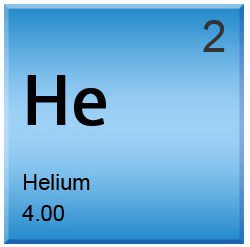Keeping Abreast of the Helium Market

We hope everyone enjoyed their Thanksgiving holiday. If you were fortunate enough to watch the Macy’s Thanksgiving parade then you no doubt were in awe of the magnificent balloons soaring five or six stories high. These balloons are, of course, filled with helium gas — 300,000 to 700,000 cubic feet (the equivalent of over 2,400 high-pressure cylinders) of the precious gas per balloon. The next time you see one of these balloons you may have different feelings knowing the cost of the gas to fill the balloon was in excess of $500,000 per balloon.
There has been significant talk recently about the availability of helium and the news is grim at best. The market has a very high demand for this non-renewable resource but the supply is extremely tight. As if that wasn’t enough, a recent auction held by the U.S. Bureau of Land Management (BLM) saw prices for helium up 135% over the prices at the last auction. This was for crude helium, so by the time the helium goes through the purification process and handling we will see very high prices for the product that is available.
The largest helium resource globally is the BLM but that capacity is in rapid decline. The 2019 auction is anticipated to be the last one held by the BLM. There are other sources available like the natural gas plants in Qatar which supply upwards of 30% of the world’s helium, however that supply was disrupted in 2017 by a Saudi embargo. That issue caused a shortage that was quickly felt across the globe causing tight allocations on the product and revealing just how fragile the supply chains really are. Additional concerns are the planned natural gas plant maintenance shut downs which must take place periodically. These shut downs send the gas companies scampering for additional supplies elsewhere to keep their client base supplied. All of these disruptions add cost to the supply chain and thus drive the prices up on the street level.

The Amur Gas Processing Plant which is under construction in eastern Russia will produce approximately 60 million cubic meters of helium annually but completion of that facility will not be realized for years.
The National Aeronautics and Space Administration (NASA) as well as other federal agencies have increased their demand for helium significantly cutting even deeper into the supply chain. The military and medical uses for helium are always first in the pecking order as to who gets the product first so it is likely that recreational uses for helium will be affected in the supply chain first.
On the bright side, the shortages have prompted helium recovery and recycling technologies to emerge. A good example is a Helium Saver Module for Gas Chromatography developed by Thermo Fisher Scientific. It uses helium at such low rates that a single cylinder of helium is said to last the life of the equipment. There are also developments in imaging technology that may require as little as 10 liters of liquid helium as opposed to the hundreds or even thousands of liters currently required to chill the magnets.
Also, due to the higher prices of helium it has become a focused investment model. As opposed to capturing helium as a by-product of natural gas extraction, mining helium as the main product is now financially feasible. This is possible on Federal land only with a change in the current laws. The laws say that mining on leased Federal land is permissible for oil and natural gas and that helium extraction is allowed during this process. A new amendment was presented last year, the Helium Extraction Act of 2017 (H.R. 3279). The amendment recommends including helium as a primary product for mining and not just as a by-product of oil and natural gas. This has passed the House and will now continue on to the Senate. There is an abundance of helium underground and the possibility that it could be mined as a commercially viable product could ease the current market pressures.
It will remain an uneasy market looking into the immediate future but with new technologies and new mining opportunities on the horizon hopefully there will be better news coming. As always, we will keep you informed as the global news on helium continues to develop.
How much do you know about helium?
- What year was helium discovered? a) 1850 b) 1868 c) 1900 d) 1905
- Who discovered helium? a) geologist b) miners c) astronomers d) welders
- What is the boiling point of liquid helium? a) -185C b) -201C c) -225C d) -269C
- How many cubic feet of helium is used each year globally? a) 750 mcf b)1 bcf c) 6.2 bcf d) 8.5 bcf
- The element symbol of helium is a) He b) H c) H2 d) Hi
- After Hydrogen, Helium is the most abundant element a) True b) False
- Most of the world supply comes from a) Volcanic Activity b) Atmosphere c) Gold Mines d) Natural Gas Extraction
- Helium is classified as a “Noble Gas” a) True b) False
- Helium is used in a) MRI Machines b) Scuba Diving c) Lasers d) All the Above
- What year was helium found on earth? a) 1868 b) 1895 c) 1905 d) 1918
If you have questions about how gases are being utilized at your facility, about the purity of gases for particular applications or about gas related hardware like regulators or manifolds, call us. We are here to serve and we take it very seriously so, call us at Middlesex Gases & Technologies where integrity and service have carried us proudly since 1949.
For more information on any of our services or products, contact Ron Perry, Sales & Marketing Director.
